A year and a half ago I did a post with the story of the Patagonia River shoes, and at the end I “promised” to do another on the story of the Patagonia Fishing Boots. It’s taken me a long time, but with a little help from a friend (more on that later) I’m finally able to sit down and share this tale.
Firstly, I am not a fisherman. I love all sorts of outdoor activities, and when I was a kid and our mom took us into the Wallowas’ high lakes I tossed the requisite line with a bobber in it and acted like I liked fish cooked over a fire (and once “caught” a fish when I saw a bobber cruising pretty fast around a lake, waited until it got close to the bank, leapt in and thrashed around enough that I got tangled in the line, and crawled out with a fish flapping furiously around my legs) but as I got older and my ADD got more well-developed I gravitated towards other less cerebral, more frenetic activities.
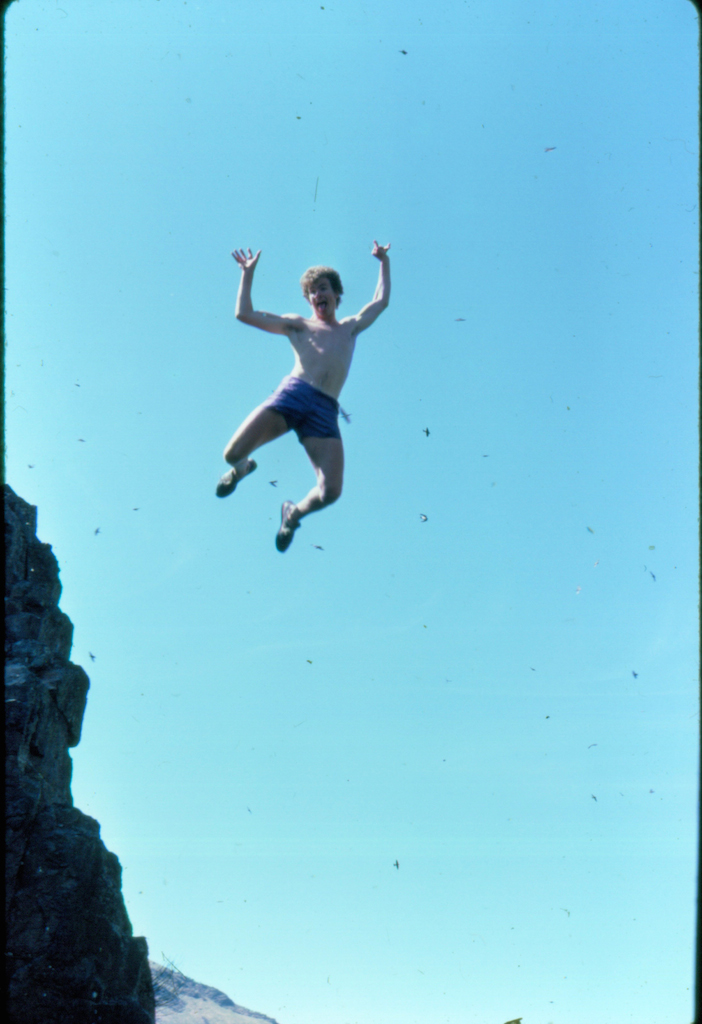
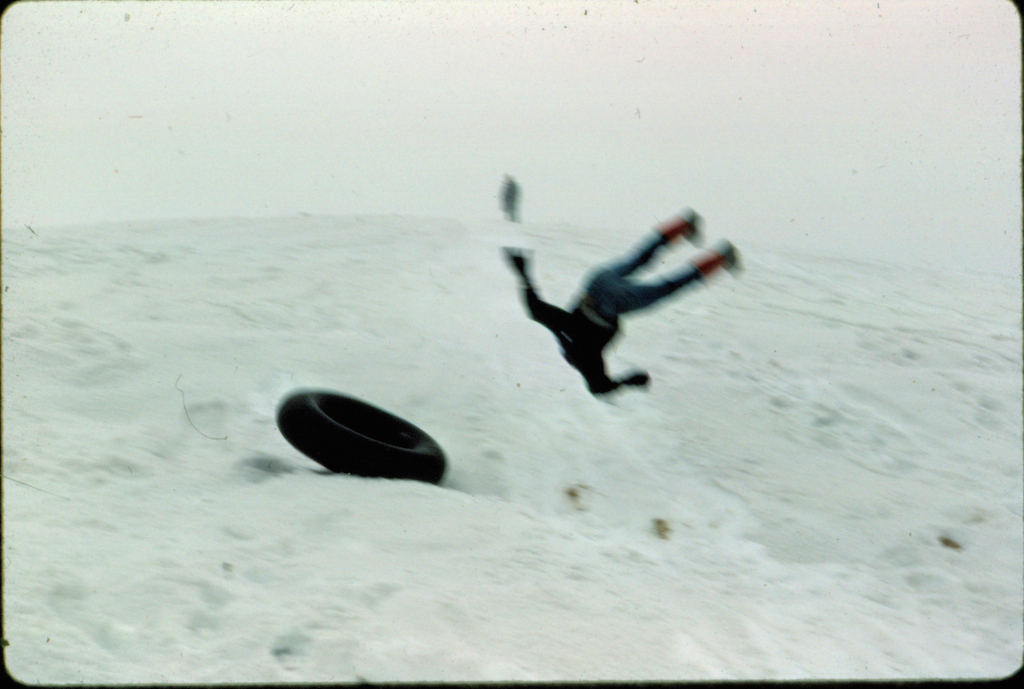
Fast forward many years and I was sitting at my desk at Patagonia one day in about nineteen hundred and ninety seven, doing whatever it was that I was doing, when Patagonia owner Yvon Chouinard came shuffling over. YC is a great guy and has a big laugh, but he can be a bit gruff, which I think is a cover for being a bit shy at heart. After a perfunctory greeting he kinda grumbled “Hey, I think I wanna do some fishing boots. All the boots out there are shit, and I am tired of them being so fuckin’ heavy and uncomfortable. Can we make some good fishing boots?” When the boss asks a question like that, there is only one answer: “Sure!” I wasn’t too surprised; YC’s got legendary enthusiasm for fly fishing all over the world, and Patagonia had long had a line of technical fishing clothing that made up for its lack of profitability by its functionality and quality, and the company was already working on an ambitious project to apply its outdoor fabric and construction advantages to the challenging world of fishing waders.
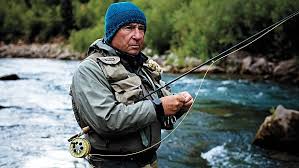
But then he surprised me: “And I want to do a flats fishing boot as well. Every time I go down bone fishing my feet just get destroyed, and I want something that will work for that.” Ooh boy, now we got ourselves a project: “flats fishing” is done almost exclusively in the Caribbean, and the objective is to catch the strong and wily bonefish:
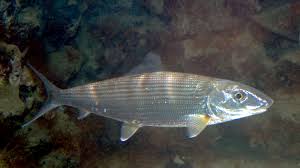
and doing so is primarily the domain of North American fishermen who are looking for a warm weather/warm water alternative to fly fishing in the snow in wintertime Montana. Catching bonefish is notoriously difficult due to the shallow and clear water with few friendly nooks that rivers have, and going on bonefishing trips is notoriously expensive (combining tropical locales with guided fishing). Needless to say, it’s a tiny niche activity within fly fishing, which is a relatively niche activity itself. Patagonia made a few breezy, quick-drying tropical shirts, hats, and pants, and sun gloves for the heat and intense glare of long days standing in knee deep water in the tropics:
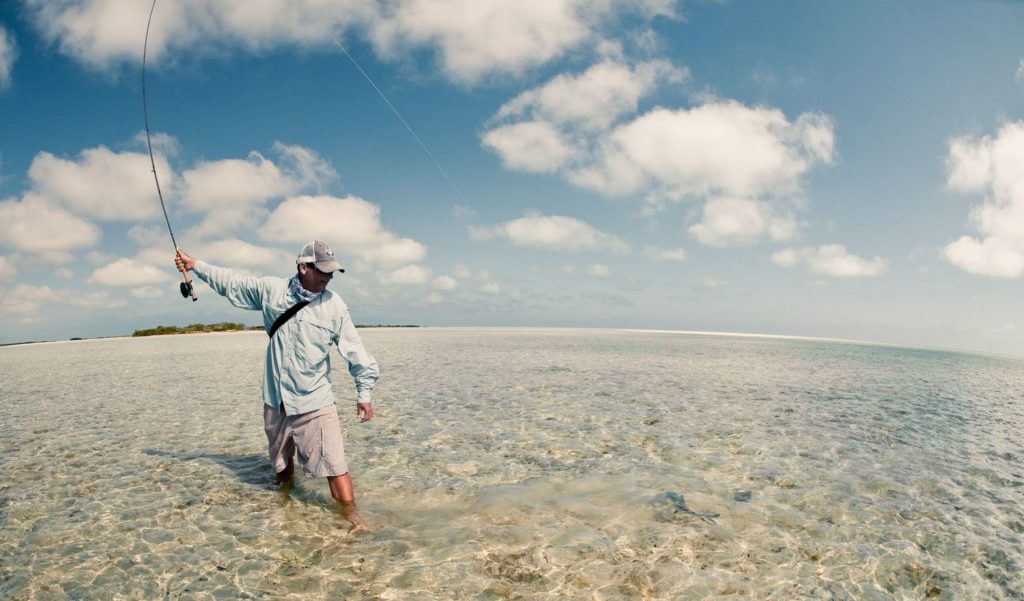
but indeed appropriate footwear was elusive. It was my understanding that most of the sea bed was crushed shells and old limestone, which swirled up when you walked and then upon settling would work its way down into your shoes, where it would then grind away mercilessly at your wrinkly, warm water-softened skin. As with fishing apparel, the footwear that works for cold -water river fishing in Wyoming doesn’t necessarily work for 85 degree water over degraded coral beds off the coast of Belize.
At the moment that YC mentioned a flats shoe, however, I wasn’t thinking about the challenges associated with developing the right product. I was thinking about money. I didn’t want to burst his bubble, but I wanted the owner of the company to understand what the implications were of his proposal. “Wellll….that’s interesting. I have no doubt we can make an appropriate product, but given the potential volumes, I don’t think it would be very profitable.” Which was putting it mildly; the investment in producing footwear is far greater than that of apparel, factories have minimum order quantities, and cost amortization over quantities is an important aspect of shoe economics. But his response was predictably perfect: “I don’t give a shit about that. I want to make some good fishing boots, and if we can do it, we’ll be the first.” Okay, Boss, you’re the boss! Seemingly satisfied, YC shuffled away and as I watched him go, I thought “well, this is going to be an interesting ride!”
As it turned out, shortly after this brief “meeting” I went to Portland for the biannual footwear materials show, where fabric, rubber, plastic, etc vendors from around the world (ie Asia) come to set up their small booths in a ballroom at the convention center where dorks like me wander around trying to figure out how to conjure up interesting shoe ideas from the materials these folks create (it’s actually interesting to realize that most of the key players designing most of the entire athletic shoe market pass through that room over 2 days).

I used the opportunity to go to Portland’s venerable fishing shop, Kaufmann’s, where my mom -as an avid fisherman – spent a good chunk of our inheritance on her passion. I got a good sense of how much of that was true when I walked in: the nice guy asked the gratuitous “Can I help you?” and I said “Well, I’m Gin Diegel’s son and I’m interested in fishing boots”
“Ohhh, Gin Diegel’s son?!!? Well, welcome! How indeed can we help you? Let us show you the red carpet treatment!” Indeed, it was clear that Gin Diegel was a preferred customer!
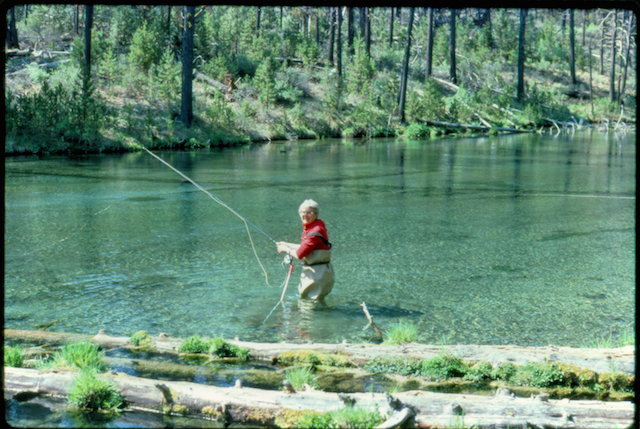
After they showed me around the store a bit we landed at the boot wall. I picked up the various offerings from Orvis, Simms, LL Bean, and others and looked them over: construction techniques, materials, country of origin, shape, etc, and tried a couple of styles on. And realized YC was correct: fishing boots were shit.
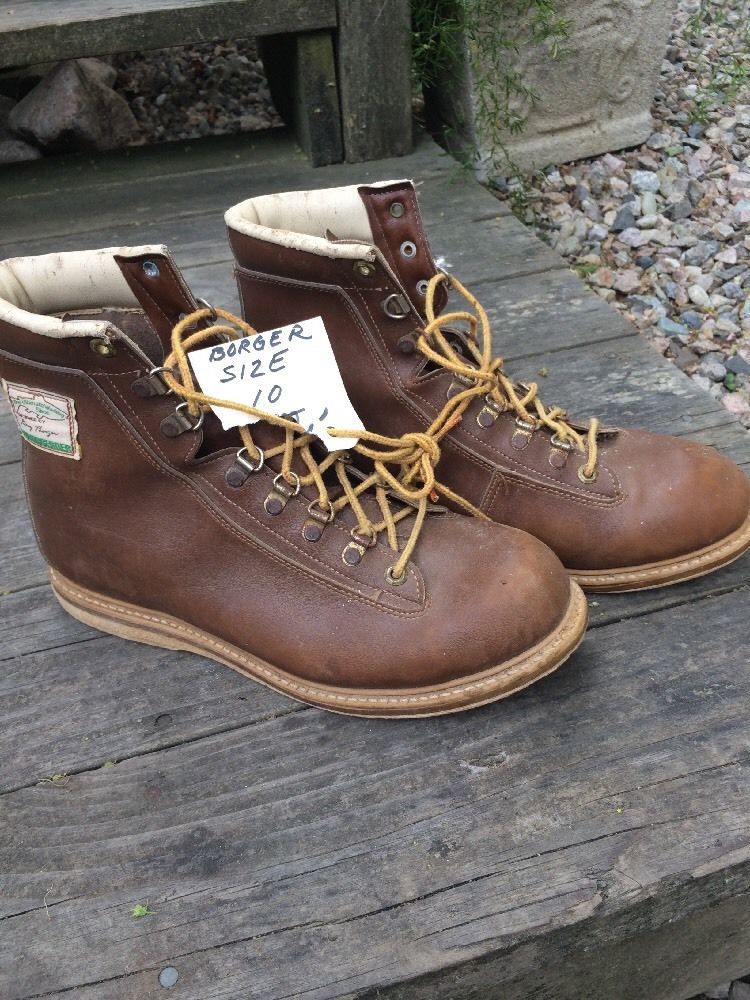
The first thing I noticed was how heavy they were; despite the fact that many of them had felt soles (felt has good traction on wet rocks) and felt is much lighter than rubber, which is typically the heaviest component of shoes, they were super heavy, and and the soles were also super stiff. It was clear that the companies were taking the concept of as lasting board a bit too literally and made the boots super stiff; perhaps to keep from rolling an ankle off the rocks?
Once I had the boots on I felt like rolling my sleeves up a little, sticking my arms out in front of me, and stomping around the store:
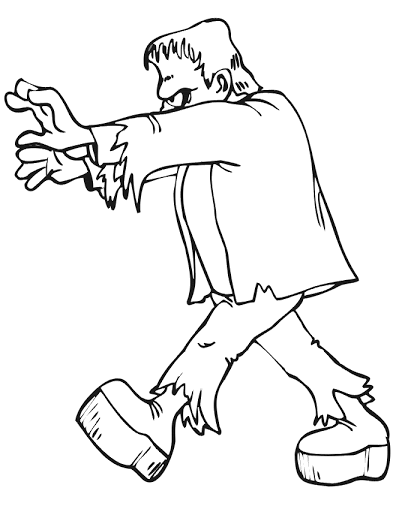
I literally couldn’t imagine myself trying to step on/around slippery rocks in swift water in those clunkers.
And the uppers were made of leather?!? Leather is a great material for certain applications: a lot of cows have given up their skin for car interiors, luggage, and shoes that….don’t get wet. Leather can be treated, but it takes some time, the treatment doesn’t last that long, once saturated it takes forever to dry, and when it does dry it’s quite stiff (I know; plenty of mountaineering/backpacking boots are also leather that’s “waterproof” but those aren’t typically fully submerged, and in any case I think those are dumb too!). However, synthetic leather is to leather what polyester is to cotton; it’s mostly hydrophobic and dries quickly, and in many cases the look/feel/performance is indistinguishable from real leather. Not to mention that synthetic leather is typically lighter, is always a fraction of the cost due to easier manufacturing, and it generates much better yields (it’s a lot easier to cut jigsaw pattern pieces off of a 6-foot wide roll than a hide that’s roughly shaped like a cow). And there were no drain holes in most of the boots, so the boots were not only heavy in the first place and the leather would soak up water like a sponge, but at least you’d be hauling a bucket of water sloshing around your feet!
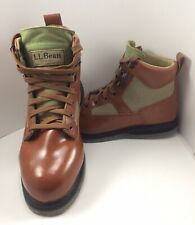
After about a half an hour of rapid immersion in the world of Fishing Footwear I stood back from the wall and stared at the selection. I thought to myself: “It is pretty clear to me that NO ONE who has ever worked on athletic shoes has ever thought of making fishing boots, nor vice versa.” It seemed that the companies had approached the concept of fishing footwear as a “boot”, but I saw it as potentially a slightly overbuilt basketball shoe, complete with strong materials, plenty of ankle protection from both rolling off rocks and getting scraped by rocks, with hydrophobic materials and quick-draining through strong and strategically-placed mesh.
I am not prone to audibly talking to myself, but as I stood there thinking about fishing footwear, and perhaps to give myself the initial pep talk for my next encounter with The Boss, I said out loud: “We are gonna change this industry, and it’s gonna be easy!” (at least, for the river footwear; the flats/bonefishing boot could prove to be another story).
To be continued: Research and Design, and into The Flats we go.
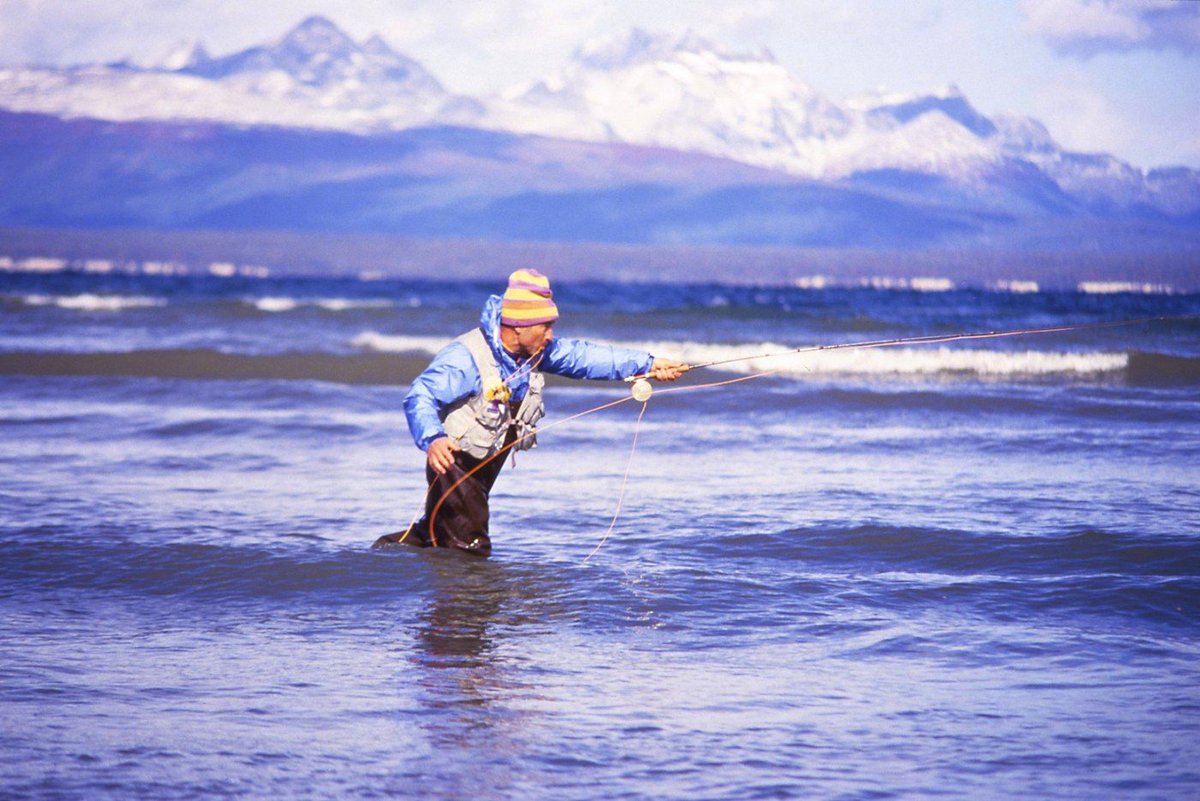
You leave me here….waiting for the next installment? I’m on pins and needles since I DO fish and am now “hooked” on this tale and where it spins. Looking forward to next R & D issue.